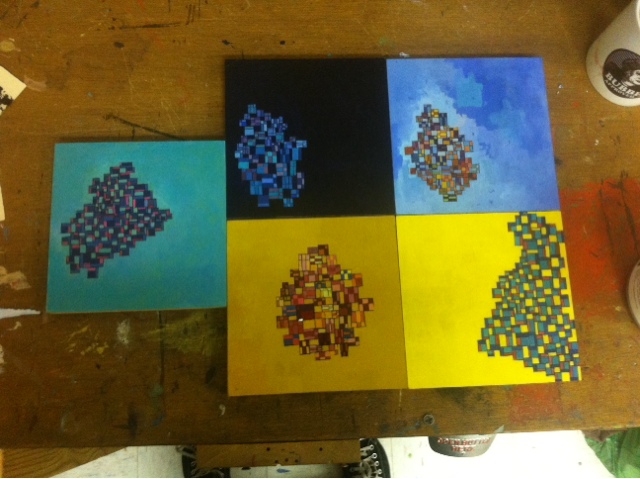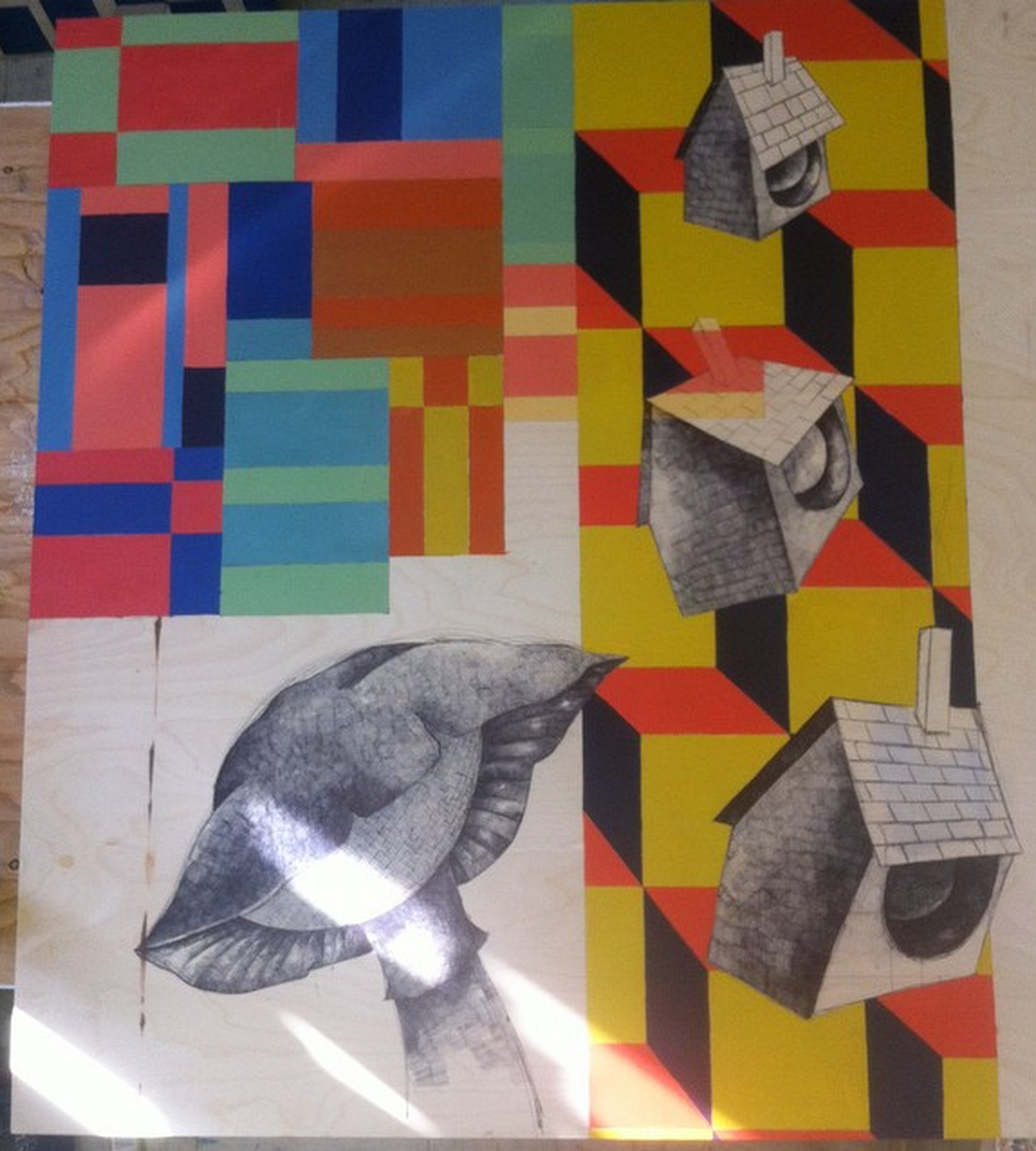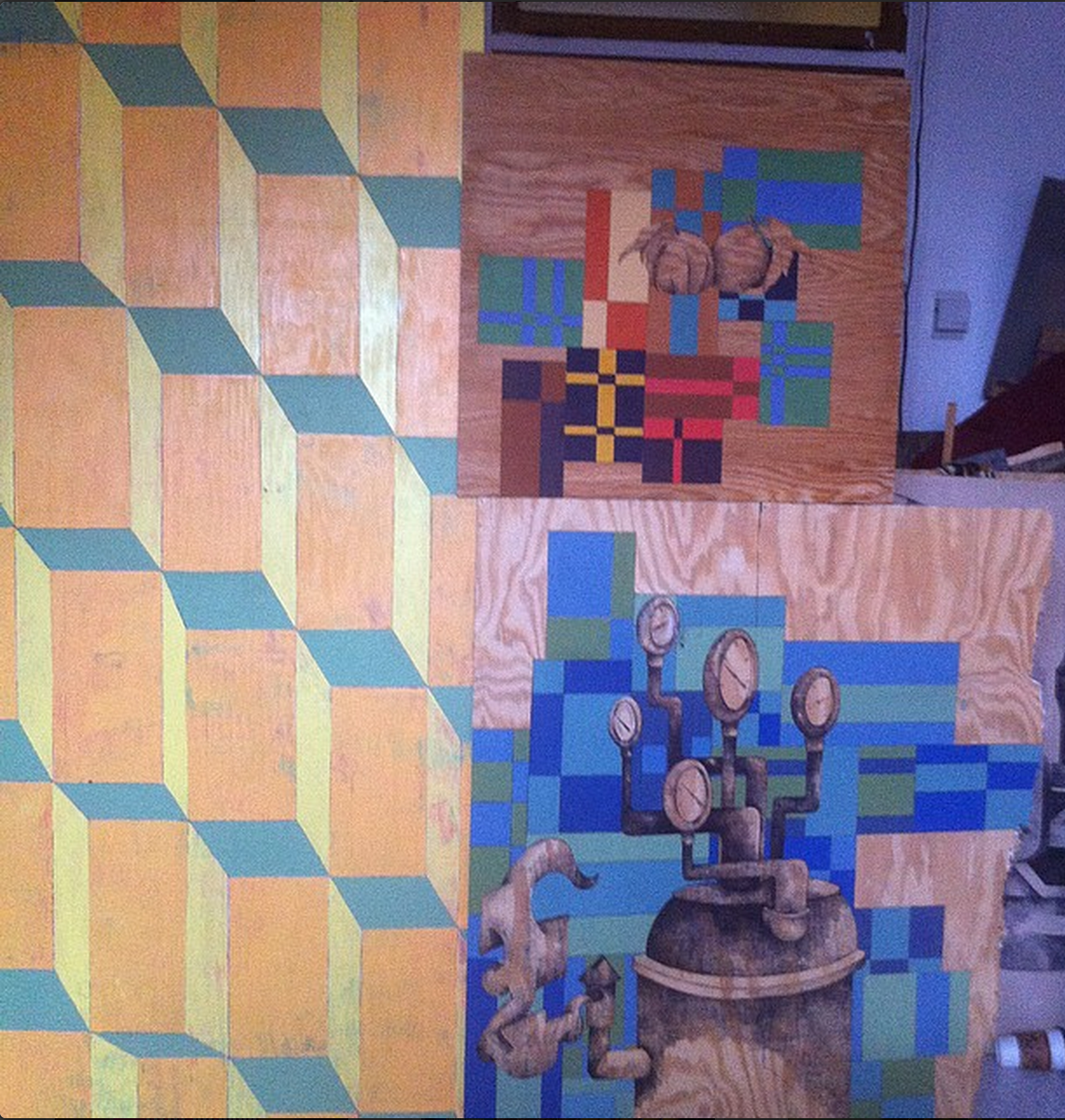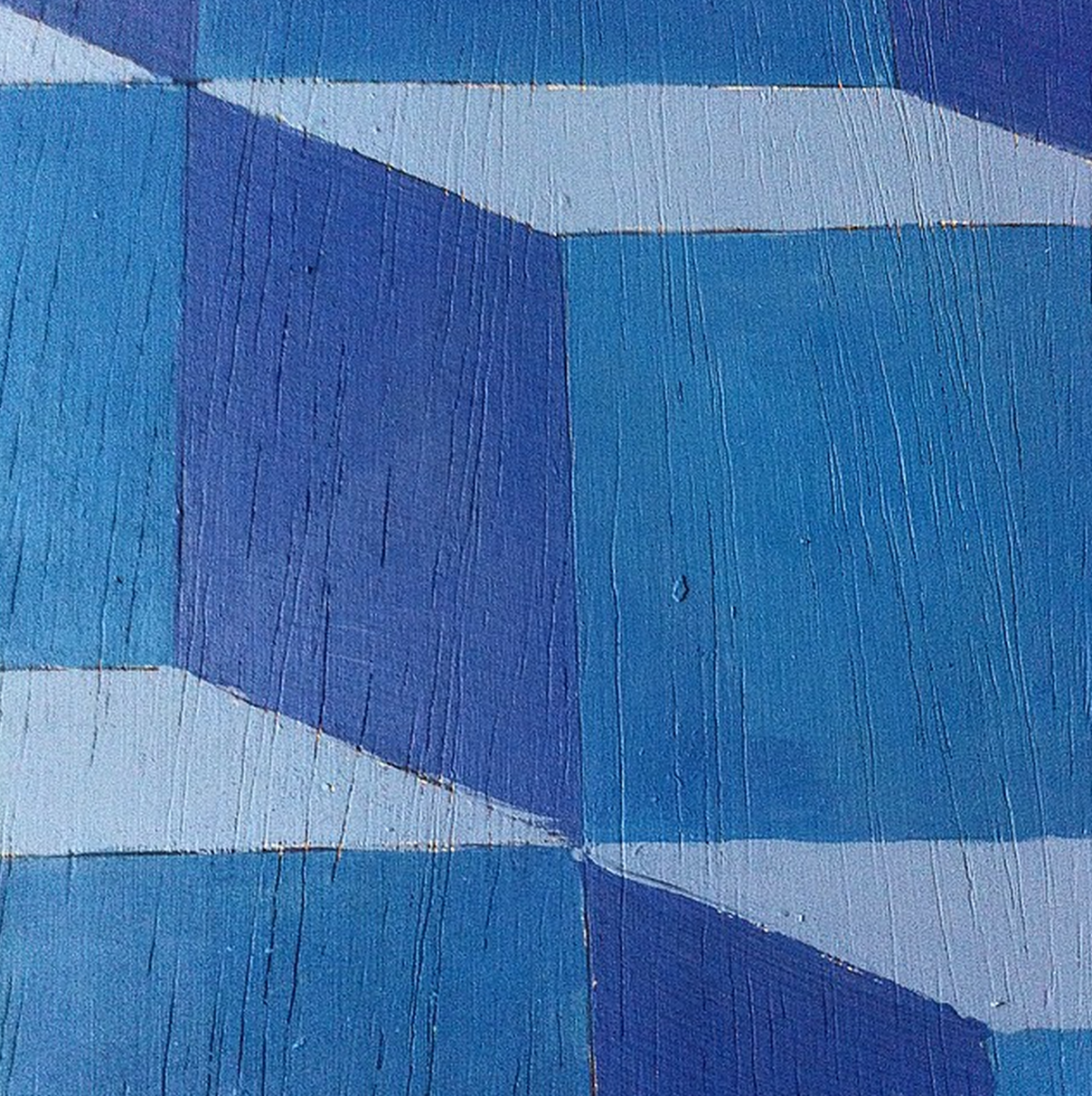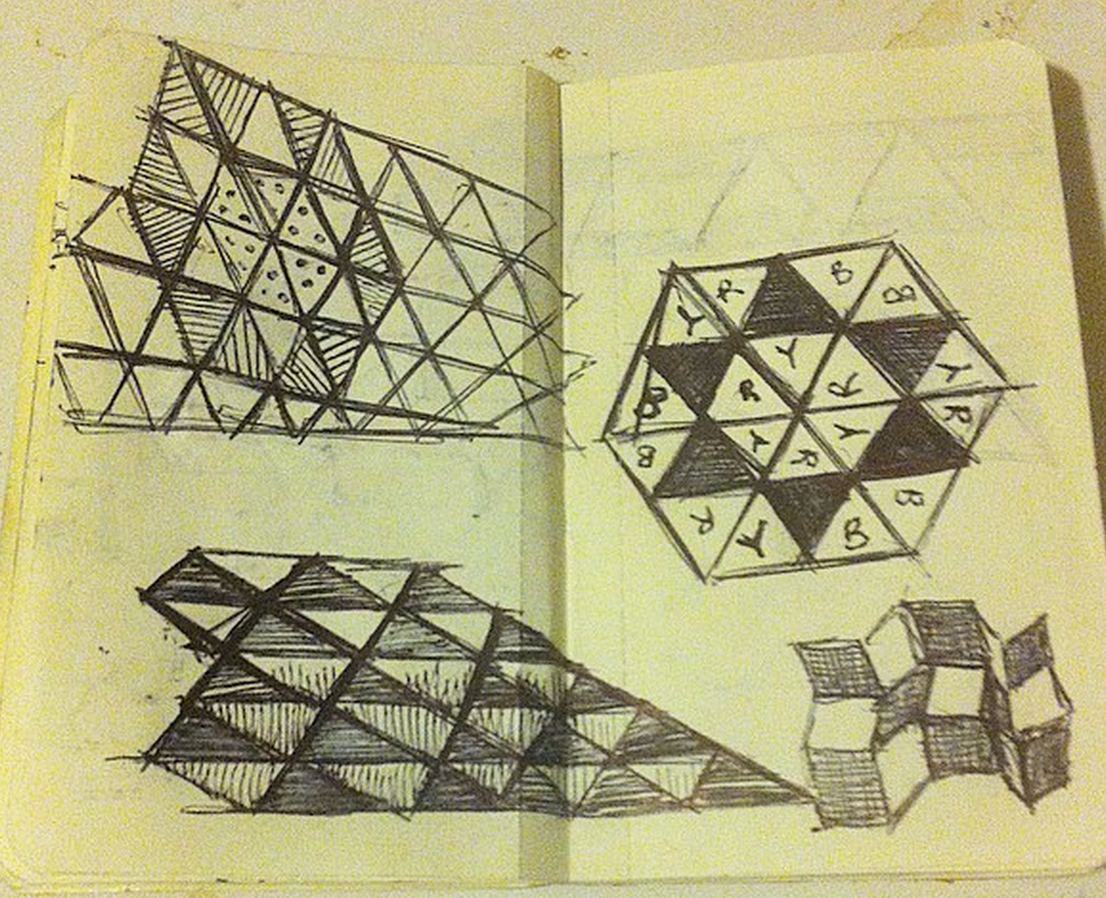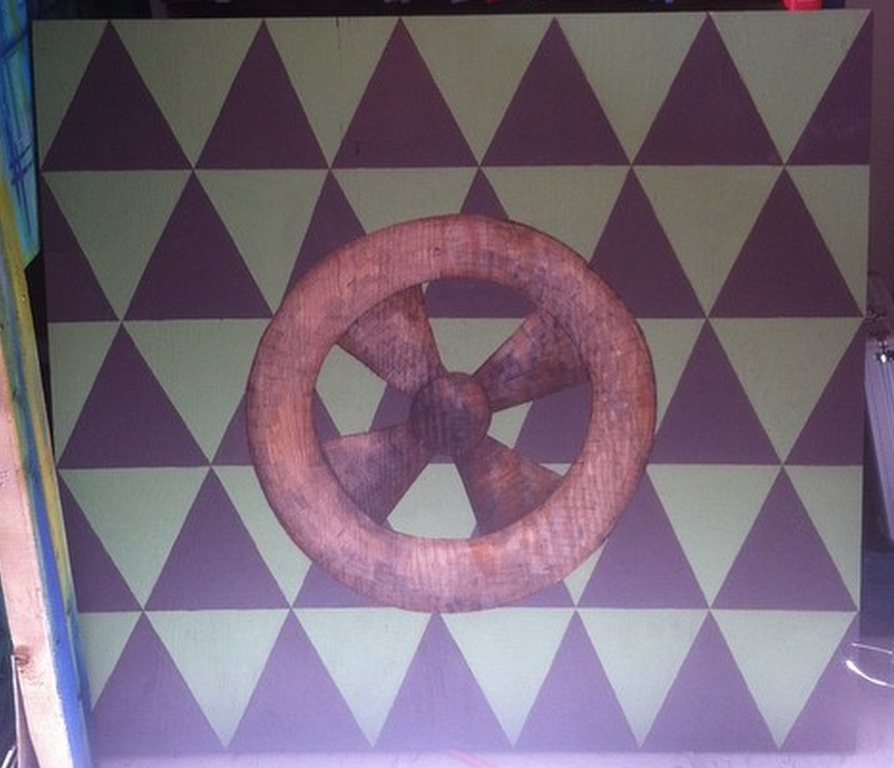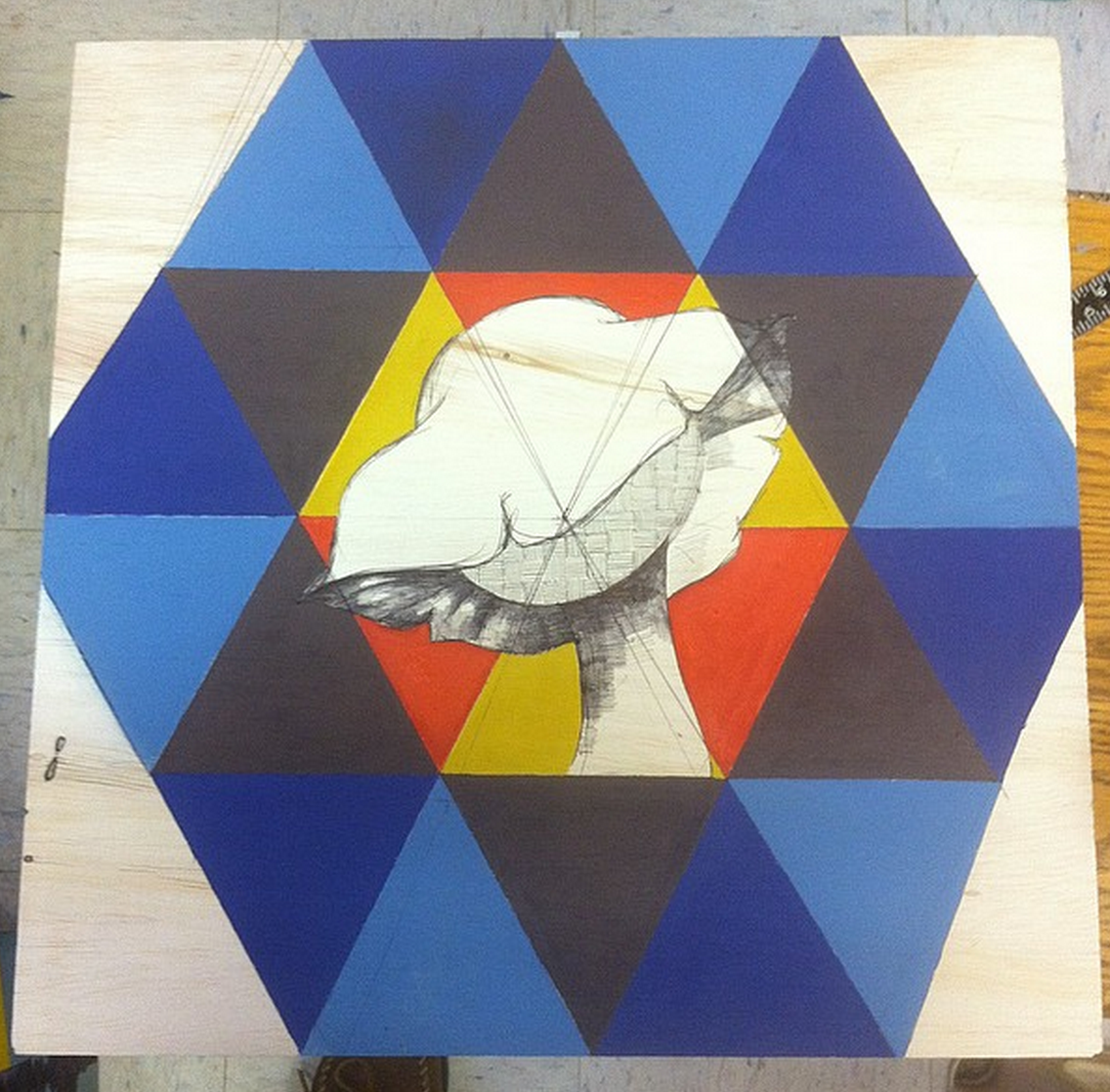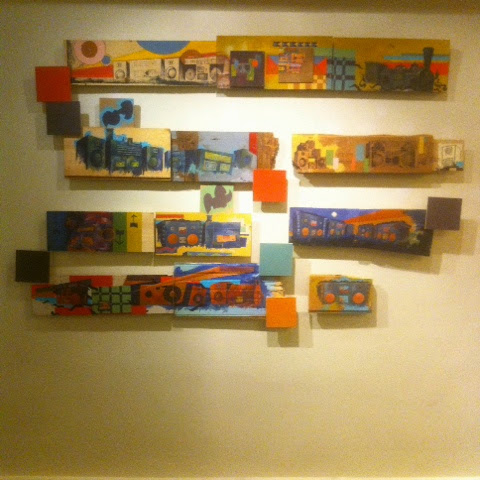UThis summer has been so very trying on my creativity. I took a job in an art gallery and seemingly lost my creative mojo. There were so many works around me, very few of which I wanted to feel any influence by, and on the whole my little brain has felt completely an utterly overwhelmed. Compounded with the amount of time that the job takes up I feel like I have been in for it.
Category: Art
I’ve been plugging through Robert Hugh’s “Goya” again. It’s a good book, but long and heavy. It’s just not something you sit down and read cover to cover in a few days.
Summer is in full swing. My show in Bangor has come and gone and now I am left with the itch. I have a show of watercolors coming up in Laconia in October, but it is the end of June. I am not done making paintings like those that I put in “The Dinosaurs of Industry,” but in order to make more work, I need more materials. I need some found wood.
When I get in this mood, I generally begin by taking some early morning walks. The morning is the easiest time for me to think. I have a clear head. There is nothing to process from the day. I can respond to objects that I encounter for their sheer aesthetic value and nothing else. There are several good spots to walk in Portland, ME to find found materials. The Bayside community has two things going for it. There is a high volume of low income traffic that roams through the neighborhood and sometimes you will find interesting tidbits of the night before, post-its, receipts, paper bags, etc. There is also the architectural salvage store and a few warehouses and a drop off for a good will. Sometimes people will drop off items, like plywood or busted furniture, which are not going to be useful to anyone in the future as actual furniture. To me, these items are gold. Often you will find small pieces of wood around warehouses that were used as packing or for trucks to drive over icy patches, etc. I try to take nothing that looks like it is being used. Lastly, the architectural salvage has a bin outside which houses pieces that they do not want to resell. This usually results in a bunch of less than ideal looking surfaces, but sometimes there are some real gems.
I then tend to walk around the neighborhoods. The West End is usually devoid of good building materials. If you catch someone remodeling on the right day you could very well find something, but people in the West End clean up rather quickly. It is the nice end of town after all. If nothing else a walk through the West End is pleasant. I then head down the hill and Close to the water. Sometimes you will find some wood towards where the ships come in. I do not generally walk up and down the docks as I don’t want to irritate the folks working on the ships coming in. It is generally early after all, and the folks on the docks usually have been up far longer than me.
I then swing down Grant and Sherman streets. Apartments are cheaper there, so there is a high turnover rate and you can quite often find interesting things that people have left behind when they are moving out. Tomorrow I intend to try walking around on Munjoy Hill. I haven’t spent much time walking up there because until a year and a half ago it was way on the other side of town from me. Now I live at the base. There looks to be some good construction projects going on so I will probably be able to find something in the way of materials if I’m patient.
When I see something that I want to use, it isn’t a casual thing. It hits me in the face with the wave of creation. I want to use it immediately. I want to hold it. I want to carry it, however heavy it may be. There is no question in my mind as to the materials I should pick up and the ones that I should leave behind. The right piece of wood can fuel entire studio days. My energies have settled a bit after some intense work. It’s time to find some creative fodder.
Peace
-Mike
In my last blog post I mentioned feeling like an artist working hermetically in my space. The idea of the artist working in a space in solitary is very romantic. If conversations with people at art shows and sales and even when I am out and about town are proof enough, the average person seems to think of an artist sitting alone in a zen like experience, joyously skipping between painting surfaces, elated to be doing something fun for a living; but tortured at the same time, suffering to find something to eat, irreversibly poor.
As I was reading an article on “Walden, Revisited” at the DeCordova, I started to feel more conflicted by the idea of hermeticism. When I think of hermeticism, I think of an old man who lived down the road from my Uncle Roger. I seem to remember that occasionally my cousin Chris and I would venture down and talk to the man, who had crudely constructed his little ramshackle shack out of mismatching woods. He was grizzled and I have no idea what he talked about. He is just a vague image in my mind. Conversely, I think of Strickland in Maugham’s “The Moon and Sixpence.” He is so taken by his painting that he is unaware of love, social niceties, or even the state of his own body; he was dying of leprosy but still painted on.
The show features “Two Cabins,” by James Benning; comparison between Thoreau’s cabin on Walden and the unabomber, Ted Kacynski’s shack in Montana. The strange correlation between utopia and dystopia becomes evident. They are both other worlds which we are in one case yearning for an in another case heading toward. Perhaps neither is entirely attainable or perhaps both are ultimately truisms dependent on the other. Maybe it is the job of the hermetic artist, one who is detached from society if only in perception, to reveal the utopia within our more dystopian reality. Utopia only exists in that we know what does not work. We have forever been trying to produce machinery and goods which will make life easier. It is a utopian ideal that life should be easier, but as we grow to find our lives easier, we realize that error of our leisure. Our leisure begets idleness which as a byproduct results in a dystopian society.
As I sit in studio visiting and revisiting mathematical patterns and optical illusions coupled with drawings of nature and the failures of our industrial society, I begin to see the paradoxical relationship of Utopia and Dystopia. The work begins to make more sense. It is more simply put an accumulation of the things we want and the things we wanted and their propensity to change in relation to what we have.
My desires are mercurial at best. I have started reading “The Sea Wolf,” by Jack London. Humphrey Van Weyden is a learned man from San Francisco who is lost at sea after his Ferry boat is struck and sinks. He is picked up by a sealing schooner set for the Japanese coast. At the helm of this ship is Wolf Larsen. The two characters talk of their varying ideals of life; Larsen is a scourge and an autodidact, Van Weyden a studious scholar. Larsen yearns for adventure and the knowledge within that adventure, but only insofar as it will benefit him economically. Van Weyden is wound up in his philosophical ideals of life. He is very detached from what life actually is. He grows to value his own breath, as he could surely have been left for dead at any moment thus far in the book. And so I find the conundrum that always stings my being and my creativity. Adventure is dangerous by necessity. Without any threat to our well being there is no adventure. We must overcome threats in order to feel that rush indicative of an adventure. That rush coupled with the bucolic or the mathematical precision of a city’s architecture yield a sense of accomplishment and Benjamin’s aura. I yearn for both settings. I yearn for the danger and I yearn for my work. I am at once Van Weyden and Wolf Larsen. I am Nick Carraway on his ledge in New York city, experiencing life both within myself and witnessing myself.
Peace
-Mike
Last week I substitute taught a class on minimalism for a friend of mine at Maine College of Art and I couldn’t be more grateful, as without her, I never would have stumbled across Agnes Martin’s Grid Paintings. In a Charles Darwent article in the July, August issue of Modern Painters, Darwent says, “the artisanal slowness of Martin’s paintings – each canvas stretched and gessoed by the artist herself, its gridded lines worked out mathematically in her head and then drawn freehand onto the surface with a short ruler – calls for us to see them slowly.“
It is my fourth morning in the Midwest. A wet snow has started to cover the ground. Word from home is that there is a larger snowy blanket awaiting my arrival. But yesterday was a cold rainy day, which found me in Feed Cultural Center’s window, sporting headphones and finally installing Coal Trane: Gotta Git it in Your Soul.
Overall, I am pleased with the way the installation worked out. Tonight I am doing a small totem workshop and there is an opening for Transmissions a show which includes six people who went to grad school with in Maine.
I’ve determined that I will share with you the rough draft of my notes for my artist talk on Friday. I have been under the assumption that nothing has changed in me since before graduate school for the longest time, but I now realize that this is a fallacy. My work has changed, as too, my voice has changed. Let me know what you think of the notes.
- a natural object or animal believed by a particular society to have spiritual significance and adopted by it as an emblem.
I am starting an experiment. In efforts to draw more and fit artwork into my day in the in between spots I am carrying notebooks that are specifically for a certain subject. I have started a bird, robot and monster book. The books are just memo books and, as such, are not incredibly precious. I feel like the nature of these books will make it easier to deal with mistakes and to work quickly. This morning while I was experiencing my beginning of the day studio time I tried to work through a few different characters in my monster and robot memo books and it seemed to get me by the working kinks that start every studio day.
I have always kept sketchbooks so this practice doesn’t seem completely new, but this is the first time that I have ever challenged myself to fill a particular book with variations on just one subject. I think this will prove interesting. Often subjects become boring when you draw them too much because they become all very much the same. As I am attempting to create a different creature for each page I think that this will make me think a bit more out of the box.
At any rate, it was at least a pleasant way to end my night last night and begin my day today. I wonder what other subjects I will try to fit into memo books. They are cheap. I’m looking forward to the drawings. I hope you dig them too.
Peace
-Mike

